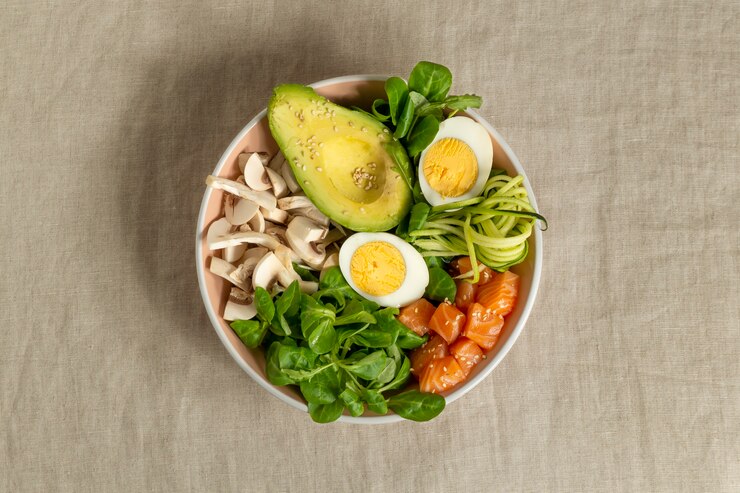
Dieting can feel like a challenge, especially when it restricts so many of your favorite foods like barbecue or ice cream. If you’re used to indulging in high-calorie, fatty, or sugary meals, the idea of changing your diet might feel downright impossible. But what if there was a diet that didn’t completely ban foods like meat or fat?
Enter the ketogenic diet, or “keto” for short. Originally developed to help children with epilepsy, this diet has proven so effective that it’s been adopted by many for other reasons, like improving health and losing weight.
The keto diet focuses on low carbohydrates, moderate protein, and high fat. When you reduce your intake of carbs and moderate your protein, your body enters a state called ketosis. In ketosis, your body produces a chemical called ketones, which turn fat into energy. This is one of the reasons so many people are drawn to keto—it helps burn excess fat and can lead to weight loss.
Another appeal of the keto diet is its emphasis on high-fat foods. Typically, diets require you to avoid high-fat options, but with keto, fats are encouraged as long as you drastically cut your carb intake. Given the choice between “no bread, no meat” or “no bread, but plenty of meat,” most people are more likely to try the latter—unless, of course, you’re a vegetarian.
At first glance, finding high-fat, low-carb foods might seem simple. Just eat meat, right? Top it with heavy cream, drizzle it with oil, throw in some nuts, and enjoy with a bit of milk—that should work, shouldn’t it? Not quite.
The keto diet’s success depends on your body staying in ketosis, which relies on consuming a very limited amount of carbs each day. Go over that limit even slightly, and your body leaves ketosis. At that point, all the fats you’ve been eating won’t be burned for energy—instead, they’ll get stored as body fat.
This is why it’s critical to avoid high-fat foods that also contain a lot of carbs. Certain foods might seem healthy or harmless but are surprisingly high in carbohydrates. For instance, fruits like bananas, grapes, raisins, dates, mangoes, and pears, as well as starchy vegetables like potatoes, sweet potatoes, yams, and corn, can quickly kick you out of ketosis.
So, what are the best high-fat, low-carb foods? Here are some great options:
1. Fatty cuts of fresh, unprocessed meat (preferably from grass-fed animals).
2. Healthy oils like extra virgin olive oil and avocado oil (avoid oils made from seeds).
3. Dairy products, especially cheese.
Cheese, in particular, is a keto favorite because it’s high in fat, low in carbs, and contains protein. But not all cheeses are created equal when it comes to keto. While most cheeses are safe for this diet, some types aren’t ideal. So, how do you know which ones to choose?
To start, it’s wise to avoid processed foods, including overly processed cheeses. Processed products often contain additives, hidden sugars, or artificial ingredients that can raise their carb content, defeating the purpose of the diet. If possible, look for cheeses from trusted local makers or try making your own cheese at home.
If that’s not an option, stick to natural and minimally processed cheeses. Always check the nutrition labels to confirm the carb content before buying. Avoid processed items like cheese spreads, cheese sticks, or overly soft cheeses, which may contain more sugar or carbohydrates. Hard cheeses tend to be the best option since their carb content is typically lower. For example, cheddar, parmesan, brie, camembert, goat cheese, and feta all work well for keto.
Softer cheeses or processed varieties like cream cheese or spreads can have varying levels of sugar, so reading food labels carefully is essential. When possible, choose fresher options, but if you’re buying processed cheese, make sure it’s low in carbs and fits with the limits of your keto plan.
Cheese can also be easily incorporated into keto-friendly snacks, like homemade cheese crisps. However, don’t forget that cheese can be very easy—and tempting—to overeat because of its salty, savory taste. Moderation is key, even with foods that are keto-approved.
Ultimately, the keto diet is one of the more enjoyable and manageable diets, especially for someone like me who loves cheese. Knowing I can still enjoy my favorite foods, as long as I monitor my portions and stay mindful of carb intake, makes sticking to keto so much easier.
So, are you thinking about trying the keto diet? Or are you already following it? What’s your opinion on incorporating cheese into your meals?